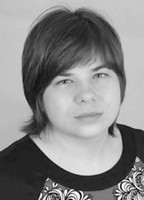Neurophysiological predictors for physical working capacity control: analysis of innovative studies by foreign laboratories in 2010-2016
Фотографии:
ˑ:
Teoriya i praktika fizicheskoy kultury №1 2017, pp. 102-104
UDC 77.05.05+ 34.39.21
Dr.Biol., Professor J.V. Koryagina1, 2
PhD S.V. Nopin1
PhD V.A. Blinov2
PhD O.A. Blinov3
1Scientific and Methodological Center Analyst
2Siberian State University of Physical Culture and Sports, Omsk
3Omsk State Agrarian University (OmGAU), Omsk
The article gives an analytical overview of the most promising studies in athletic neurophysiology and psychophysiology for the period of 2010-2016 performed by the leading foreign university laboratories. Analysis of the study reports showed that the modern science has made notable progress in understanding the neurophysiological predictors of physical working capacity. Strenuous physical loads were found to be of positive effect on the neurotrophic processes in brain. The study identified a few specific aspects of the regional brain morphology and physiology for the regions in control of certain motor skills and conditional abilities, with neurophysiological characteristics of different athletic conditions being described. Issues of ideomotorics, movement control and proprioception are being considered by scientists. The study data gives the means to understand the mechanisms behind the athletic efficiency in different sport activities.
Keywords: physical working capacity, neurophysiology, proprioception, neuro-muscular system, movement control.
References
- Chaddock L. et al. A neuroimaging investigation of the association between aerobic fitness, hippocampal volume, and memory performance in preadolescent children / L. Chaddock et al. //Brain research. – 2010. – V. 1358. – P. 172-183.
- Cooke A. Readying the head and steadying the heart: a review of cortical and cardiac studies of preparation for action in sport //International Review of Sport and Exercise Psychology. – 2013. – V. 6. – №. 1. – P. 122-138.
- Davids K. Deconstructing neurobiological coordination: the role of the biomechanics-motor control nexus / K. Davids, P. Glazier //Exercise and sport sciences reviews. – 2010. – V. 38. – №. 2. – P. 86-90.
- Dounskaia N. Control of human limb movements: the leading joint hypothesis and its practical applications / N. Dounskaia // Exercise and sport sciences reviews. – 38.4 – 2010. – 201 p.
- Enoka R.M. Unraveling the neurophysiology of muscle fatigue / R.M. Enoka et al. //Journal of Electromyography and Kinesiology. – 2011. – V. 21. – №. 2. – P. 208-219.
- Gollhofer, A. Importance of core muscle strength for lower limb stabilization / A. Gollhofer; D. Gehring; G. Mornieux // 6 International Congress on Science and Skiing 2013, St. Christoph a. Arlberg .– Austria. – P. 11.
- Goodman R.N. Stress, emotion regulation and cognitive performance: The predictive contributions of trait and state relative frontal EEG alpha asymmetry / R.N. Goodman [et al.] //International Journal of Psychophysiology.–2013.–V. 87, №.2.–P.115-123.
- Han J. Sport attainment and proprioception /J. Han, J. Anson, G.Waddington, R. Adams //International journal of Sports Science & Coaching.–2014.–V.9,№.1.– P.159-170.
- Kohman R.A. Neurogenesis, inflammation and behavior/ R.A. Kohman, J.S. Rhodes // Brain, behavior, and immunity. – V. 27. – 2013. – P. 22-32.
- Mizuguchi N. Motor imagery beyond the motor repertoire: Activity in the primary visual cortex during kinesthetic motor imagery of difficult whole body movements / N. Mizuguchi, H. Nakata, K. Kanosue // Neuroscience. – 2016. – 315. – P. 104-113.
- Mizuguchi N. Motor imagery and sport performance / N. Mizuguchi, H. Nakata, Y. Uchida, K. Kanosue // The Journal of Physical Fitness and Sports Medicine. – 2012. – 1(1). – P. 103-111.
- Müller R. Running on uneven ground: leg adjustments by muscle pre-activation control / R. Müller, S. Grimmer, R. Blickhan //Human movement science. – 2010. – V. 29. – № 2. – P. 299-310.
- Paillard T. Effects of general and local fatigue on postural control: A review / T. Paillard // Neuroscience and Biobehavioral Reviews. – 2012. – V. 36. – P. 162–176.
- Park I.S. Regional сerebellar volume reflects static balance in elite female short-track speed skaters / I.S. Park, J.H. Yoon, N. Kim, I.J. Rhyu // Int J Sports Med. 2012 Nov 9. – Free access http://www.ncbi.nlm.nih.gov/pubmed/23143696.
- Schlaffke L. Sports and brain morphology–a voxel-based morphometry study with endurance athletes and martial artists / L. Schlaffke, S. Lissek, M. Lenz [et al.] // Neuroscience. – 2014. – 259. – P. 35-42.
- Smith D. M. Neurophysiology of action anticipation in athletes: A systematic review / D. M. Smith //Neuroscience & Biobehavioral Reviews. – 2016. – V. 60. – P. 115-120.



 Журнал "THEORY AND PRACTICE
Журнал "THEORY AND PRACTICE